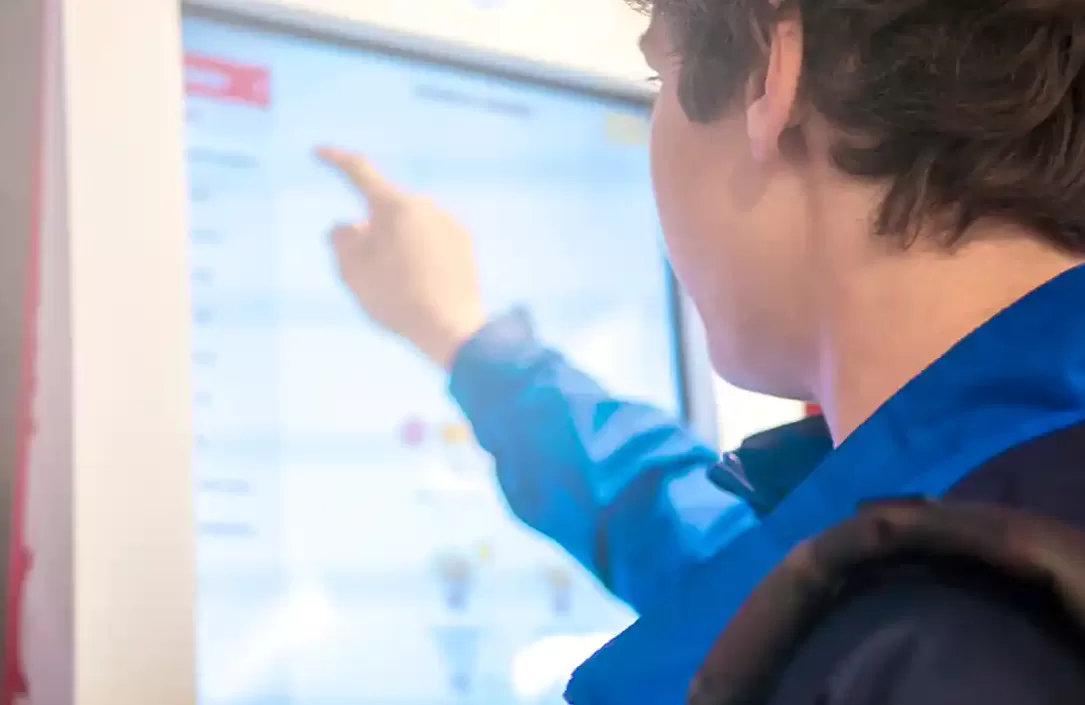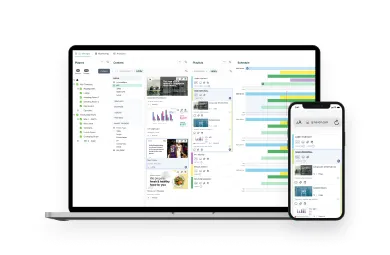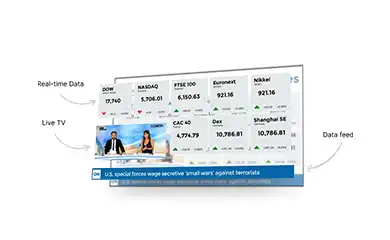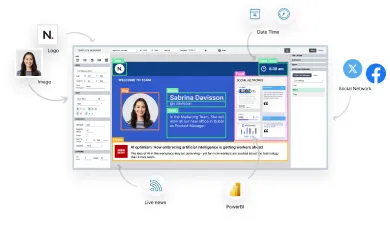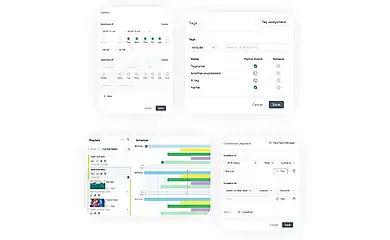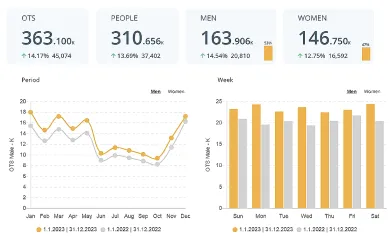Interactive Digital Signage
Software Explained
The advent of interactivity in digital signage
When digital signage software first hit the market, available displays were based on cathode ray tube (CRT) monitors. They were bulky, heavy, and not inviting or visually appealing whatsoever. They could also not detect touch without applying a unique and usually expensive touch film to the monitor surface. These were the early days of interactive applications. Back then, you would have encountered these monitors in interactive kiosks used for in-store bridal registries or shopping mall directories. You would also encounter these kiosks in government offices and at bank ATMs.
From these early applications, interactive digital signage was born. However, the technology had a long way to go. Content-creation tools were scarce, and internet bandwidth was a fraction of what it is today. Kiosks relied on dial-up modems, limiting them to basic tasks like accessing database information or displaying simple graphics.
Who would have conceived that thin, interactive, wall-mounted flat-panel displays and high-speed wireless internet would soon become the norm? This shows how far we have come in the past twenty years and just how fast technology advances in general.
Technology is the big disruptor.
Fast-forward to 2021, where affordable, reliable, high-quality hardware is now available to the masses. These devices are smaller, lighter, faster, and cheaper. Today, we regularly touch screens or even surfaces like windows or tables to interact with digital signage. Voice and movement can also be used, opening up new possibilities for interactive and smart digital signage, and we’re just scratching the surface. These advancements are not just exciting, they’re revolutionizing the way we interact with technology.
Modern smartphones have added a new dimension. Now, you can use an app on your phone such as Navori Mobile (web-based) to change what’s playing on-screen or post social media messages in real-time. Given the multitude of cost-effective interactive hardware options at our disposal today, we are now living in a time where only your imagination limits the deployment of interactive digital signage.
Engage with your audience.
Today, in digital signage, top companies worldwide spend countless hours and days around boardroom tables trying to find new and innovative ways to get their customers to engage with their brands. Marketing and social media experts will tell you that engagement is everything. So, the question we want to help you answer is, how can one use digital signage software to accomplish this fundamental goal of engaging with customers and visitors in an exciting and meaningful way? The answer, of course, is, well, there are many ways!
Here are a few examples to consider:
In shopping malls, the old static maps are being replaced with interactive touchscreens. These screens help visitors find the quickest way to shop and offer other information like store promotions and new openings. This interactive way of navigating is not just limited to malls. It’s also being used in large buildings and venues like airports, train stations, hospitals, government offices, and hotels.
Interactive digital signage offers many advantages:
- People who interact with digital signage retain more information than those who are presented with a stream of static content. The act of touching the screen to make a selection or a choice engages the viewer like nothing else. It’s the point where the viewer becomes a participant.
- Static digital content is somewhat limited by its nature. It does the job for simple advertisements and messages, but interactive digital signage does much more.
Smartphone Interactive CMS
Navori pioneered the introduction of smartphone CMS, designed specifically for non-desk employees. The objective is to enable employees to take control of the displayed content in the field. With this system, they can trigger content, take photos, post messages for immediate publication, or simply turn the screen on or off. This innovative approach ensures that employees can easily manage and update digital signage content directly from their smartphones, enhancing flexibility and responsiveness in content management.
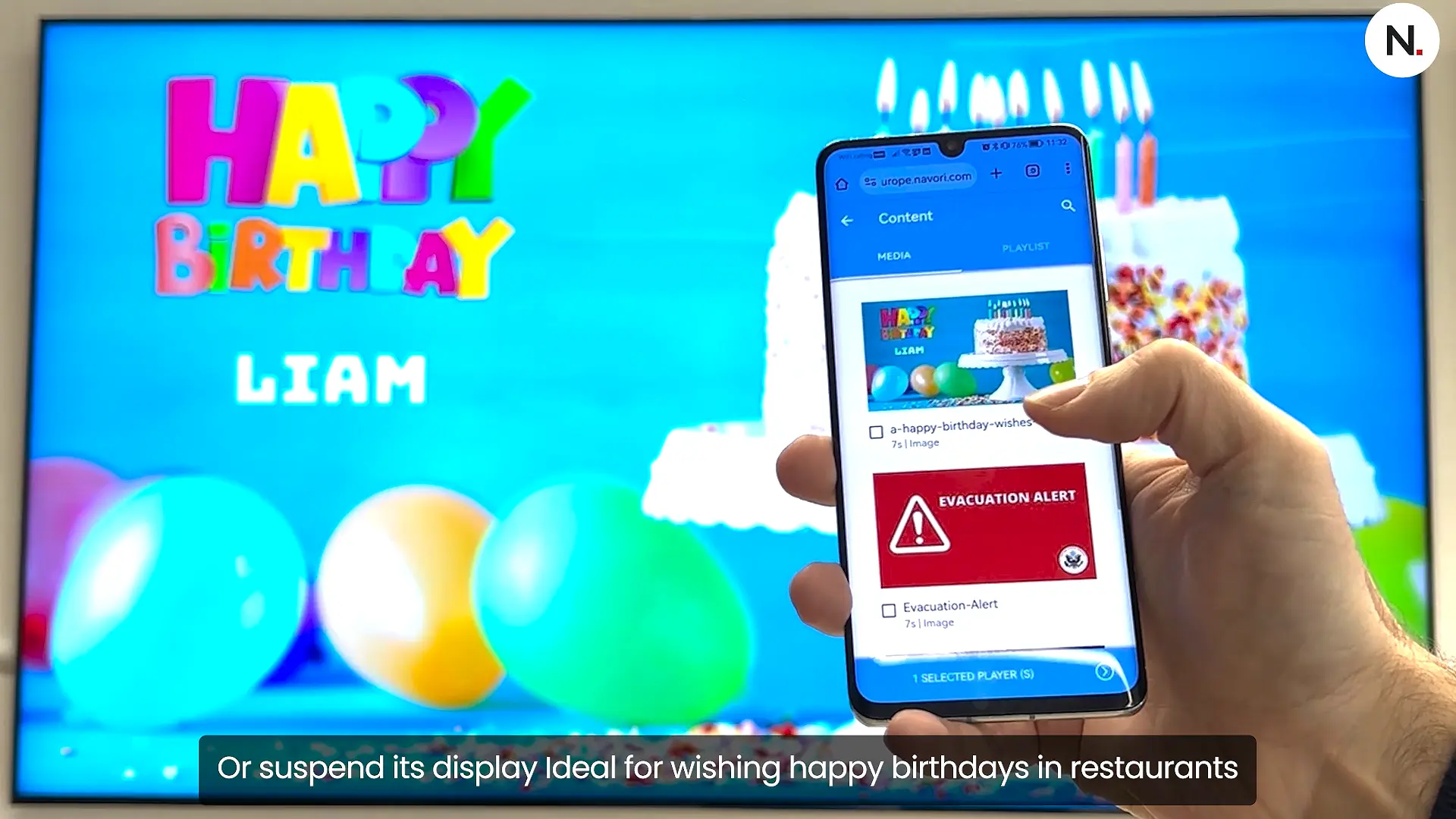
Data-driven interactivity
Data-driven interactivity refers to the use of data and automation to create interactive experiences. It involves using live data, sensors, or computer vision to contextualize what is displayed on screen. This approach allows for the creation of dynamic and engaging content that responds to real-time inputs.
Connectors play a crucial role in this process. They act as the bridge between the digital signage software and various data sources or devices, enabling seamless integration and communication. By utilizing connectors, digital signage systems can pull in data from multiple sources, such as social media feeds, weather updates, and internal databases, to display relevant and timely information.
Live Data Feed
Digital signage may use Weather, demographics, behavior, or real-time data feeds like local weather to tailor and personalize the content displayed on the screens. This can include dynamically updating content based on variables like audience preferences, location, weather conditions, available product inventory, flight, bus or train departures or any current events. Example: Weather-Driven Promotions: Adjust displayed promotions based on current weather conditions, ensuring relevant offers are shown to capture customers’ attention.
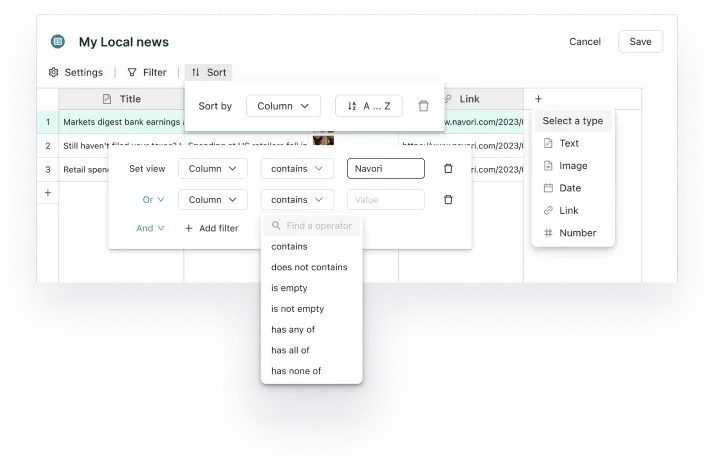
Sensor Input
Digital signage screens are connected to sensors. In Navori CMS, the user creates broadcasting scenarios or simply integrates live data into a template. The synchronization between the source and the screens is immediate, meaning that between an event and the triggering of a broadcast, less than half a second elapse. Navori offers an API Server and an API Player for Windows and Android if the user prefers local triggering. Example: Intelligent Queue Management: If queues become too long, the digital signage can trigger content guiding customers to alternative waiting or checkout areas, optimizing the flow and reducing wait times.
Computer vision data feed
Navori is the first software vendor to offer computer vision features in its digital signage software. The camera interprets the situation beyond the screen and transmits it in real-time as data. Navori CMS users create their triggering scenarios; it’s simple, no coding required, and accessible to all types of users. Example: Demographic-Based Content: Tailor content based on the demographics of nearby customers, delivering personalized messages that resonate with their specific interests and preferences.
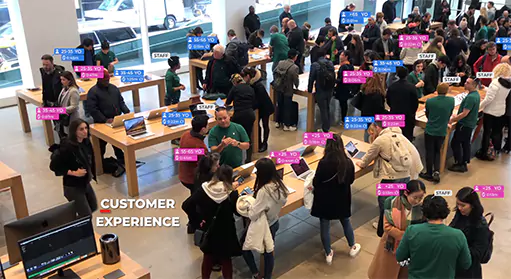
Lift and learn Digital Signage
Lift and learn digital signage is a straightforward way to enhance your customers’ shopping experience by providing instant interactive value. The concept is simple: customers can pick up products on display, and when they do, the nearby screen will automatically show relevant information about that specific product. This self-serve, interactive experience not only helps customers make informed decisions but also adds a fun element to their shopping journey.
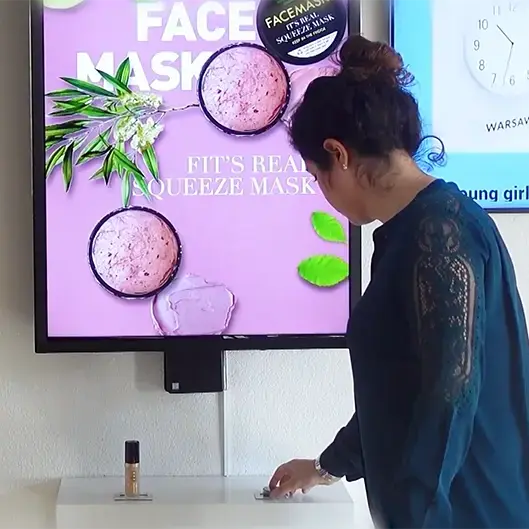
Touch screens
Using touch screens enhances interactivity and engagement by allowing users to directly interact with the content displayed. Touch screens enable intuitive navigation, enabling users to access information, browse products, or interact with interactive applications effortlessly. This hands-on approach creates a more immersive and memorable experience for viewers, leading to increased dwell time and improved brand engagement.

Self-service digital kiosks
Self-service kiosks are typically free-standing touchscreen displays that are mounted on some form of stand or base. Each touchscreen is running a digital signage software application that brings the interactive content onto the screen and allows the user to interact with it. Self-service or interactive kiosks are typically used in the following scenarios that any professional-grade digital signage software platform will allow for:
- Interactive product catalogs
- Interactive directions and wayfinders
- Room booking and reservations
- Enrollment in company promotions or mailing lists
- Browsing the company website
Each one of these interactive digital signage scenarios will provide your company with a way to interact and engage with your audience and provide value to them at the same time. Consider deploying one of them in your company head office or retail locations, for example, you might be surprised at how quickly you will get results.
